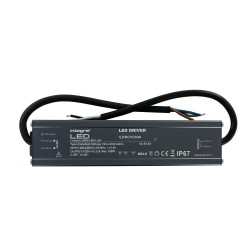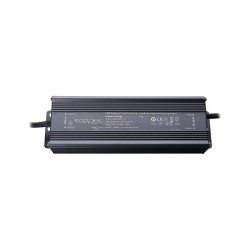
LED tape and LED strips: what are the types, uses, and do you really need them?
LED strips (also known as LED tapes) are a fantastic way to add attractive accent lighting to almost any room. They are inexpensive, easy to install and can alter the look and atmosphere of a space immediately. This type of lighting has proven to be equally popular in residential, retail and hospitality environments. Its adaptability and variety of aesthetic possibilities means that it can provide attractive effects such as wall-washing, edge-lighting and under-cabinet lighting. Before you hop on board the LED strip bandwagon, you should consider a few things: what types do you plan to use? For what purposes will the strip lighting be utilised? Are they really essential for how and where you plan to apply them? Sparks will endeavour to answer all these questions in this article. The LED strip light - its primary purposes and the abundance to choose from Hundreds of lighting manufacturers make LED strip lights, and the different kinds of tape have dozens of applications. This may provide a head-scratcher to the average member of the public who is looking to simply buy some LED strip lighting. There are two main purposes for LED tape, either functional or aesthetic (although of course, they may be a mixture of both). Functional lighting will amplify the illumination in any given space, whilst aesthetic lights are intended to lend some decorative ambience. LED strips can be installed indoors or outdoors depending on the IP rating of the strip and any accessories. This previous blog post from Sparks explores some of the imaginative appliances of LED strips. Key choices to make on lumen output with LED tape Some LED strips manage to emit more light per metre than fluorescent lighting. This is made all the more impressive as the light is focused, rather than dispersed in all directions as with a fluorescent tube. So high output tape is readily available on the market, and we sell many varieties of it here at Sparks from esteemed manufacturers such as Teucer LED. The 1438mm Cool White LED offers an incredible 1730 lumens and can be connected to other strip lighting. The linkable, slim LED light is ideal for kitchen lighting, cove lighting, cabinet lighting, under-shelf lighting and retail applications. Alan Tulla, the technical editor at Lux, states that LED tapes emitting 2,000lm/m or more would be considered among the highest end of the spectrum. However, such high output would risk wasteful energy output especially if they were to be mistakenly left on. So it is important that you find a balance between the right light output that will illuminate your room as you wish, without wasting electricity. If you are looking for a lower output LED tape, then there is the IP20 2700K Dimmable LED from Foss LED. This nifty LED tape produces only 420/500 lumens per metre, meaning that it is perfect to use as decorative or mood lighting - in your bedroom for instance, or in the living room. Key choices to make on colour rendering with LED strip lights You get more lumens per watt with cool-colour-temperature LEDs (around 4000K) and therefore more lumens per metre. This may mean more value for money to some. However, the disadvantage is that at low levels of illumination (maybe from dimming) the light from cool-light LEDs can look dull, with a ‘greyish’ tint. This is especially important when considering what your priorities are in lighting an area. For retail, hospitality and residential applications, colour rendering is considered more important than maximum light output. Generally, for indoor applications, you should aim to use tape with a CRI of 80 or more. This 3000K warm light LED Strip is a brilliantly efficient strip light from Teucer LED, which has a CRI rating of >80. The colour temperature of LED tape is important for aesthetic reasons. Warmer colour temperatures, such as 2700K - 3000K, works well for residential and low-illumination locations. Designers believe that such colour temperatures makes people’s skin appear more attractive, with the R9 red in the light being of particular importance. You can find the amount of R9 on the technical specifications for any given LED tape. There are obviously many cases where the appearance of peoples skin will not factor into your light choice. If you are back-lighting a sign or trying to imitate daylight with a false skylight or window, then a 4000K+ level will be more acceptable. Final tips on working with LED Strips Think about what surface these strips will be mounted on. LEDs aren’t suited for high temperatures, and so the LED tape should be fixed to a good ‘heat sink’ like a U-shape aluminium extrusion. Low wattage tapes aren’t so demanding in terms of dissipating heat and you may not need a heat sink. Still, always follow the manufacturer’s recommendations. If you are considering using an LED strip, ask for independently verified test data. Try a working sample. Ideally, do a small trial in the actual application. If you are using a lot of LED strip lights, make sure you are not using inefficient ones. Also, make sure the LED driver has a high power factor to avoid blackouts and malfunctions. Most of the suppliers we recommend make both high output and high colour rendering tape, so it is not always going to be a choice between the two. Some successfully combine the two with great results. One final point is to check the distance between the LEDs. The smaller the distance, the more uniform is of the line of light. Using the help given in this article, we here at Sparks hope you can wisely choose the LED strip light with all the knowledge you require to get the job done right!






